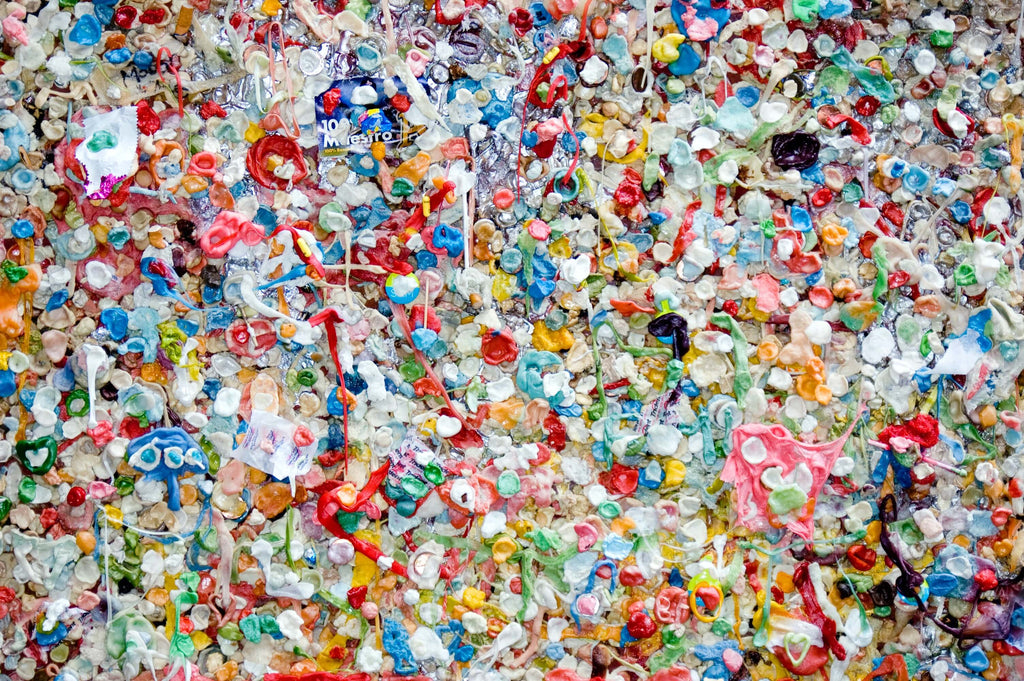Plastic wrap, grocery bags, takeout containers- single use plastic is a bigger part of your kitchen than you probably think. Here’s why it matters, and the single use plastic alternatives you can use instead.
Plastic pollution increases by a staggering 3 million tons each year. We’ve all seen the images of marine animals trapped in plastic, and the piles of trash sitting in landfills. It’s easy to disassociate from these things, but the truth is, almost all of us contribute to plastic pollution. Particularly our problems with single use plastic pollution. And one of the biggest offenders is right in our kitchen.
In 2020, the way we ate food changed. More people ordered takeout than ever before, and the use of food delivery services more than doubled. Between food containers, plastic bags, and single use utensils wrapped in plastic, this only increased an already huge issue. But even if you don’t order out, it’s hard to cut plastic out of your food chain. Bags of apples and oranges come in a plastic bag. Your favorite summer berries are kept in a plastic container. Cheese, dried pasta, and nearly every other packaged food has some sort of plastic in its design.
How Does Single Use Plastic Affect The Environment?
Most of the plastic items that interact with our food on a daily basis are single use, meaning that the majority of people only use them once. However, their impact on the environment is long-lasting.
Whether they’re used for a split second or for a year, all types of plastic are petroleum based, which requires a damaging extraction process. The materials they are made from are not renewable, nor are they naturally occurring. The production process for plastic contributes to climate change, and carbon dioxide is released when plastic is disposed of in an incinerator.
Once they’re out in the world, plastics are hard to get rid of, and more often than not, they’re not properly disposed of. Our ocean is greatly affected by plastic pollution, with 8 million tons of plastic ending up in our waters each year. Left to its own devices, plastic takes upwards of 450 years to decompose.
Can’t We Recycle Single Use Plastics?
For many years, recycling has been a key component of sustainable living. Many of us continue to use plastics but are careful to recycle them. But the actual percentage of plastic that gets recycled is less than 10%. Why? Well, only some types of plastic are actually recyclable, and they need to be properly cleaned and sorted to be accepted. While bioplastics and other more “sustainable” options are increasing, confusing labels can make it hard for consumers to properly dispose of these items. Many places, especially rural areas, don’t have access to recycling facilities. And while recycling keeps plastics out of landfills for a little while, it rapidly degrades the quality of the material. Because of this, new “virgin” plastic has to be added in to make recycled plastic usable. And at the end of the day, plastic can only be recycled 2-3 times before it loses its value.
Health Related Problems With Single Use Plastic
Beyond a deadly impact on the health of our water, plant, and animal life, single use plastic pollution raises health concerns for humans, too. The leading cause of this is microplastic pollution. Plastic might seem strong, and it sure does stick around, but as it decomposes, it breaks down into tiny, nearly invisible pieces. These are microplastics. Microplastics have been found in fish, beer, and even salt. It’s estimated that the average person consumes about a credit card worth of plastic each week.
Some regulations around the safety of plastics that are in contact with our food or drinks have come about (namely, the phasing out of BPA). But other substances with known health risks, like Phthalates, still exist in the single use plastic we have in our kitchens. Reusable plastic cookware can pose a health threat, too. Whether it’s unknowingly part of your food or making up the material wrapping it, it’s clear that your kitchen, and your health, is better off with as little plastic as possible.
Single Use Plastic Solutions
The problems with single use plastic in our kitchens and grocery stores can feel overwhelming, but solutions are out there. Most of the single use plastic that’s part of food packaging could easily be removed. And sustainable single use plastic alternatives do exist.
In order to stop single use plastic pollution, widespread change will need to happen. As consumers, we can adopt our own plastic free solutions. And, we can be a voice for change by telling corporations to do the same.

Single Use Plastic Alternatives You Can Swap Out in Your Kitchen Today
1. Beeswax wrap instead of plastic wrap
The convenience of plastic wrap is hard to beat. This is why many of us keep it around even when we’re trying to be as eco-friendly as possible. Luckily, beeswax wrap is one of the many single use plastic alternatives that works just as well. Simply warm it with the heat of your hands, then press it around the edges of the area you want to seal. If the wrap begins to lose its stickiness, you can refresh it yourself with more wax.
2. Storage tins instead of plastic bags
Rather than storing leftovers in single-use plastic bags, keep your food in reusable metal containers like these. You’ll keep single-use plastic away from your food and be able to safely reuse the tins for years to come.
3. Swap Takeout utensils for bamboo utensils
Ordering takeout? Specify in your order that you don’t want plastic utensils and use your own reusable bamboo set instead. If you often eat on the go, get a utensil set that comes with a storage option so you can keep it mess-free in your purse, briefcase, or backpack.
4. Choose reusable straws instead of plastic straws
Plastic straws are one of the worst offenders when it comes to deadly marine pollution thanks to their small size. Keep a stash of reusable straws handy so that you never have to use a plastic straw again.
5. Switch out plastic grocery bags for cloth bags
More and more places are implementing plastic bag bans or fees to combat this type of single use plastic pollution. Fight it yourself by bringing cloth bags on your grocery runs.
6. Shop bulk grains over pre-packaged items
Keeping your grocery cart as free of plastic as possible is the easiest way to keep it out of your kitchen. Rather than choosing small packages of staple grains, head to the bulk station with a pack of muslin bags. When you get home, store your haul in upcycled glass containers.
7. Choose quality serving boards instead of plastic trays
Having an event? Instead of plastic party trays, opt for a few quality serving boards made from renewable materials.
8. Swap Plastic water bottles for glass or metal bottles
This has been said before, but plastic water bottles are still a huge component of single use plastic pollution. So, if you haven’t already, make the swap to a reusable water bottle made from glass or metal.
9. Opt for the farmers market over packaged vegetables
Goodbye, pre-packaged fruits and vegetables. Pick exactly what you want by shopping in the bulk produce section, or at your local farmers market.
While the problems with single use plastic can feel daunting, more people are working to solve the issue every day. By switching to single use plastic alternatives, you can be part of the solution, too. Want to do more? Join the Plastic Free July movement this month!
Ready to go single use plastic free? From July 15th-19th, Bambu is donating 10% of our sales to organizations fighting plastic pollution.
[Lead Photo by Marc Newberry on Unsplash]





